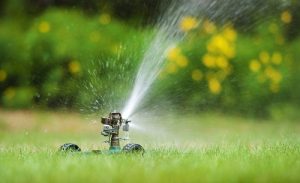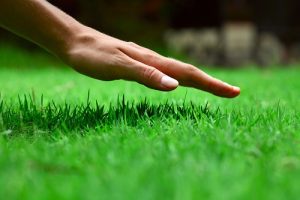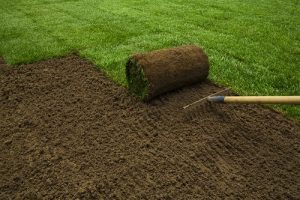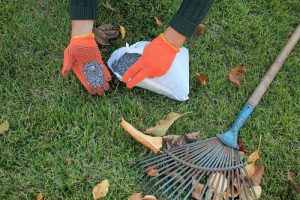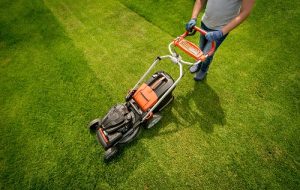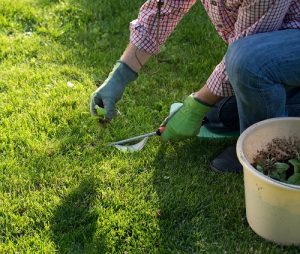 Weeds are the bane for every gardener. The second most common problem is pests. Weeds are another common problem that can be a real headache. It feels like a constant battle and takes away the fun of playing in the garden. We are here to let you know that there is an answer! For weed control and pest prevention to taking control of your landscape, you need to be ahead of the game. You ask, “How?” Learn how to prevent weeds from growing in your spring landscape using some tried and tested methods.
Weeds are the bane for every gardener. The second most common problem is pests. Weeds are another common problem that can be a real headache. It feels like a constant battle and takes away the fun of playing in the garden. We are here to let you know that there is an answer! For weed control and pest prevention to taking control of your landscape, you need to be ahead of the game. You ask, “How?” Learn how to prevent weeds from growing in your spring landscape using some tried and tested methods.
Weed Control
It is time to begin Myrtle Beach weed control today. The earlier you get rid of weeds the better. Spring is the best time to tackle weed prevention in your landscape. We’re talking about the usual suspects, including dandelions and chickweed. Here are a few ideas to get you going:
Once your garden has been established, you should temper your tilling. You can’t avoid it. Weed seeds can be sneaky, little bugs that prefer to lay dormant under the surface of soil. When they are brought closer to the surface of the soil it encourages their germination and spread.
Plant your Flowers Closer Together. Weeds love large, open spaces that are sunny. Planting your flowers closer together will give weeds less space to spread and take over. You’ll want to still follow the recommended planting distances, but by sticking your plants close together, you can take away valuable real estate from weeds.
Mulch is a great way to smother weeds and prevent them from taking over the landscape. By applying a thick layer of mulch (2 inches or more), you can smother weeds. This will also make it less inviting for weed seeds that you might have brought up to the surface. Mulch can be a good alternative to landscape fabric that is not organic. It will break down over time and improve the soil.
Just like other plants, weeds can’t live without water. It can be tempting just to turn on the sprinkler and water your garden in one go, but this will give thirsty plants what they need to overtake. Consider using a soaker-hose that will only water your plants where they need it.
Spring Pests: How to Prevent Them from Invading Your Home
Keep unwanted garden insects at bay by weeding early. Start by cleaning everything in your shed, especially any pots and planters that you intend to reuse. This will prevent any plant diseases that are recurring from appearing. Your soil will also benefit from some attention. Your plants will be more susceptible to pests if your soil is unhealthy and weak. Now is the perfect time to spread that compost you have been working on. Rotating your vegetables every year can also reduce pests.
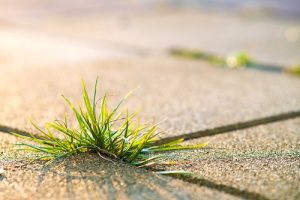 How to prevent weeds in your rock landscapes using natural methods
How to prevent weeds in your rock landscapes using natural methods
A newly laid out stone border in a stone patio or garden is a very satisfying sight. It looks so fresh and clean. It is not as satisfying to have to remove weeds from the cracks in those stones after a few months. You can tackle the weeds that grow in these rock landscapes with a variety of methods.
Sufficiently Sloped Patios: Weeds require moisture to thrive, and patios with a poor slope are more likely to retain moisture. A properly sloped patio, on the other hand, will promote proper drainage. It can be difficult for you to do this on your own but the effort is worth it. Our lawn care experts will be happy to visit your home to assess the problem and offer solutions.
Sweep regularly: This simple, but effective technique will help you to prevent weeds. Regularly sweeping your patio or driveway stones will reduce the chance of seedlings settling and disrupting new weed seeds.
Have you noticed that unwanted bugs are growing between stones? Here are some natural ways to get rid of weeds that have popped up between stones.
Baking soda is a kitchen staple that works best in spring or fall when weeds grow quickly. Baking soda will adhere better to weeds after rain. You can sprinkle baking soda on the weeds and then sweep the mixture into the cracks. Baking soda will draw out the moisture of the plant and kill it. Keep it away from flowers and grassy areas, as it can have the same effect on all types of foliage.
 Vinegar is an alternative to baking soda that can be used to kill weeds growing between stones on a patio, in cracks in driveway pavement, or along rock borders. White vinegar is usually found in most households. Pour some into a sprayer and spray it between the cracks of your rock landscape. After it has worked its magic for a few hours, return to the area and rinse off. Just be careful not to spray nearby flowers.
Vinegar is an alternative to baking soda that can be used to kill weeds growing between stones on a patio, in cracks in driveway pavement, or along rock borders. White vinegar is usually found in most households. Pour some into a sprayer and spray it between the cracks of your rock landscape. After it has worked its magic for a few hours, return to the area and rinse off. Just be careful not to spray nearby flowers.
Boiling water: This is a simple and affordable solution. Boiling Water destroys the cell structure of a plant. You will need to be careful when applying baking soda and vinegar to prevent killing your plant babies. Use a teakettle with a spout to direct the water where you need it. Pour the water generously but slowly onto the weeds. Some weeds, especially the tougher ones, may require more than one application. Overall, however, it should work!
Keep Your Lawn Weed-Free
It is important to stop weeds before they grow and become a problem.
Synthetic herbicides are available in three different types: selective herbicides (selective, non-selective, and preemergent). Selective herbicides can be used on lawns. Just make sure to read the label. Pre-emergents and non-selective herbs are safe for lawns, but not non-selective ones. Here’s a bit more information about them. Use them with caution around children and pets, especially, because they contain powerful chemicals.
Lawn Care
Weeds will most likely appear when your lawn does not feel its best, but a little TLC goes a long way. It is important to water your lawn regularly, but not too often. This will encourage the growth of deeper roots. By mowing at the correct height (normally the highest setting on your lawnmower), you can encourage your grass to grow thicker, making it more difficult for weeds to germinate. Fertilizing your lawn every six to eight week during the growing period will give it strength to fight those pesky weeds.
Pests and weeds are a nuisance, but if you take the right steps early in the growing season, it will make your gardening life easier. Call Conner’s Lawn Care Service now.
Conner’s Lawn Care Service
Myrtle Beach, SC
843-504-4901
http://connerslawncare.com/
